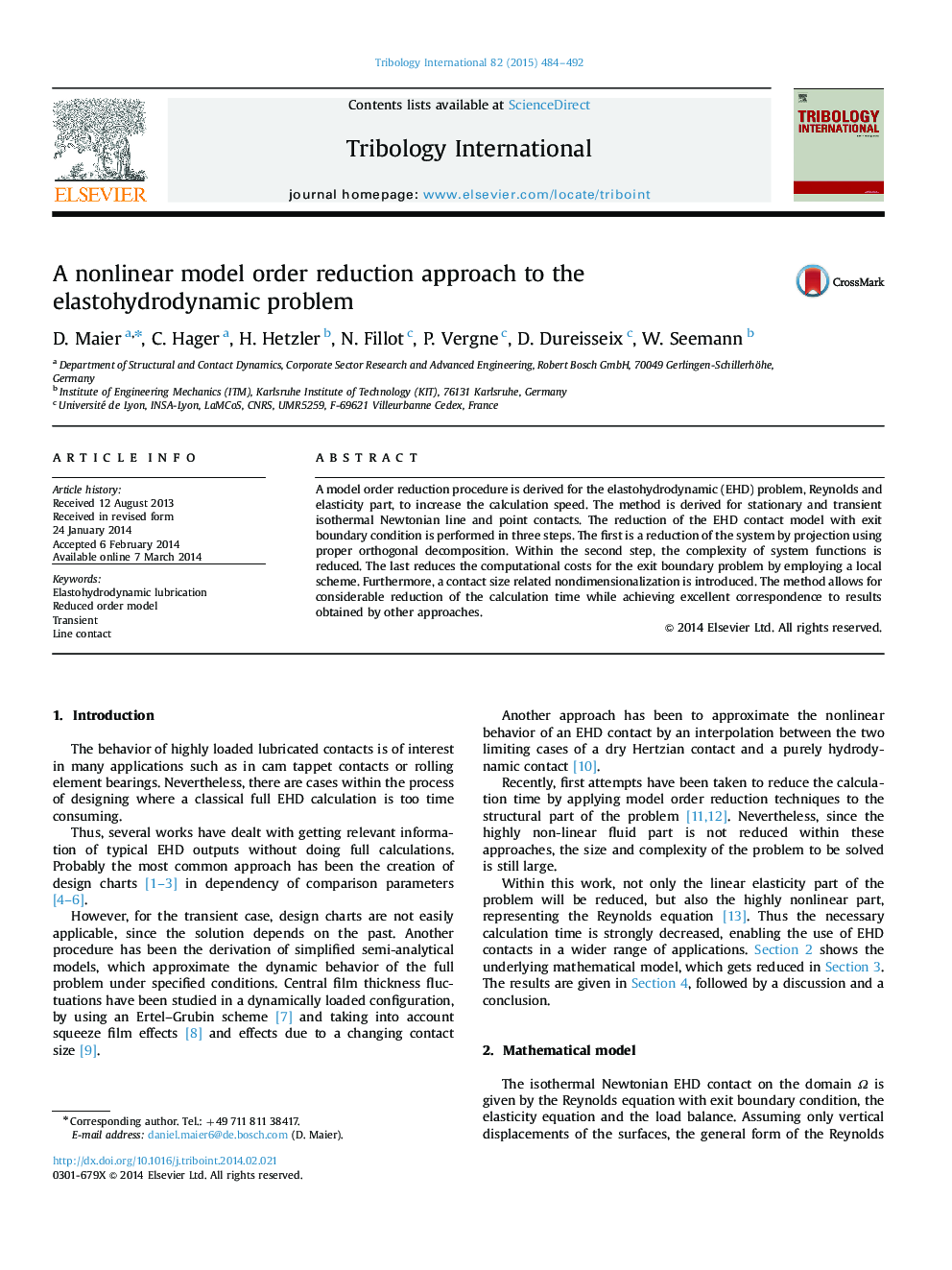| Article ID | Journal | Published Year | Pages | File Type |
|---|---|---|---|---|
| 614637 | Tribology International | 2015 | 9 Pages |
•All parts (linear and nonlinear) of the EHD problem have been reduced.•The method relies on the data compression of a proper orthogonal decomposition.•An EHD contact can be calculated faster by applying model order reduction.
A model order reduction procedure is derived for the elastohydrodynamic (EHD) problem, Reynolds and elasticity part, to increase the calculation speed. The method is derived for stationary and transient isothermal Newtonian line and point contacts. The reduction of the EHD contact model with exit boundary condition is performed in three steps. The first is a reduction of the system by projection using proper orthogonal decomposition. Within the second step, the complexity of system functions is reduced. The last reduces the computational costs for the exit boundary problem by employing a local scheme. Furthermore, a contact size related nondimensionalization is introduced. The method allows for considerable reduction of the calculation time while achieving excellent correspondence to results obtained by other approaches.
